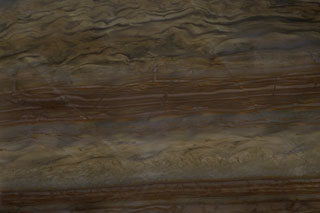
Marble is considered to be a very versatile stone, in that it may be used in many different industries. For example, over the years, marble stone has been, and still is, used in an artistic sense, functioning as the preferred medium for many sculptures. It is also commonly used within industries pertaining to construction, design, home decor, and architecture. Within these fields, marble may be used to help create anything from monuments, to palaces and temples, countertops, bar tops and table tops, flooring, staircases, vanities, and so much more.
Marble is a stone created from rocks that are called metamorphic rock. Metamorphic rocks receive this name because of its transformations that occur over time, as a result of being exposed to factors like extreme heat and pressure. This interaction with heat and pressure is not something that takes place in a manufacturing warehouse. It occurs naturally deep within the Earth's surface, therefore making marble a type of natural, or organic, stone.
Areas within the Earth's surface that contain marble deposits, or rather "parent" stones of marble (used to derive marble), are referred to as marble quarries, and are found worldwide in places such as:
-
United States
-
India
-
Russia
-
Greece
-
Pakistan
-
Spain
-
Italy
-
Turkey
-
Romania
-
United Kingdom
-
Canada
Canada is especially well known within the marble industry for having abundant quarry sources. Almost every one of Canada's thirteen provinces and territories has been noted with sources of marble quarries. Because of this, many marble manufacturers, both within and outside of Canada, have obtained Canadian marble quarries. Canadian provinces and territories known for containing marble quarries include:
Marble offers a great range of colours and patterns, making it easy to accommodate any style specifications. It is considered to be a very artistically beautiful stone, upgrading any space to a whole new level of style and appearance.
The main downside of marble is the fact that it is a porous stone, meaning it is more fragile in comparison to other typical design materials like granite, stainless steel, or concrete.
Because marble is a porous stone, it does not defend itself as well in the face of elements like heat, moisture, or abrasive materials. For instance, when used within the kitchen as a countertop, marble is likely to scorch, stain, and scratch, when subjected to typical kitchen items like hot pots, water, and knives. While marble is ideal when working with pastries or any other baking projects, as it has a very smooth surface, a marble board as opposed to an entire counter or table top is the most logical option when considering marble within the kitchen space.
Marble pieces are most ideal in areas where heavy traffic or use is not likely. For instance, within a powder-room as a vanity, backsplash, or even flooring, would work well for marble tiles. Marble table tops for bars used during special, occasional events would also be perfect for the material, as well as staircases, and decorative items or furniture.